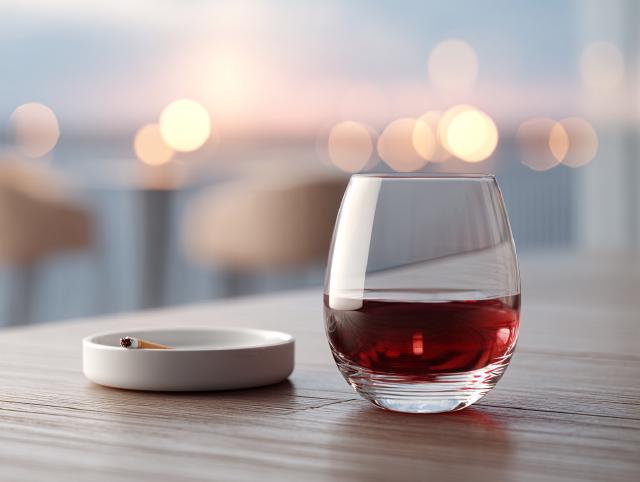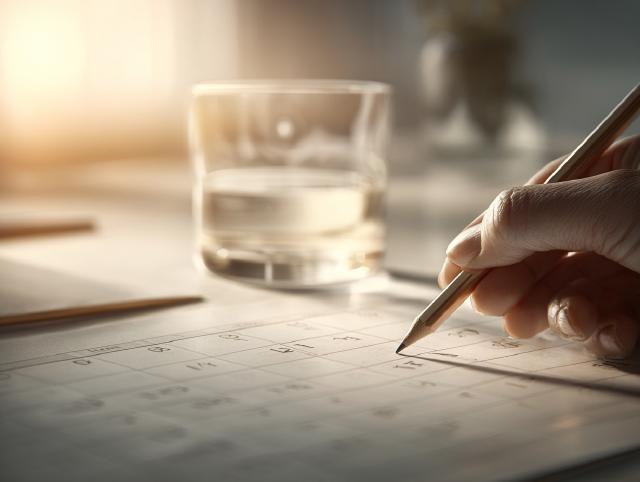Alcohol and Lapses: Safer Scenarios for the Start

Introduction: why alcohol brings back old habits
Alcohol and cigarettes have been a partnership that kept millions trapped in dependence for decades. Even the strongest quit attempts often collapse after a couple of glasses of wine or a beer.
David from London recalled: “I held out for three weeks. Felt confident. But at a friend’s birthday, I had a beer — and half an hour later I was smoking. The next morning it felt like everything was ruined.”
Why is alcohol so often the “trigger button” for a lapse?
Why alcohol revives the “old paths”
- Lowered control: alcohol weakens the prefrontal cortex, which is responsible for self-regulation.
- Associative memory: for years cigarettes have accompanied a glass of wine, so the brain instantly recalls that “bundled” script.
- Social factor: in groups where people drink and smoke, saying no to a cigarette can feel like “falling out.”
According to CDC, alcohol use nearly doubles the risk of a lapse during the first 30 days after quitting.
The 30-day rule and softer alternatives
The safest choice is avoiding alcohol entirely in the first 30 days after your last cigarette. This is when new neural pathways are forming, and any “stress test” is especially risky.
If you’re used to an evening glass of wine, try alternatives:
- non-alcoholic beer or wine,
- herbal teas with relaxing effects,
- alcohol-free cocktails (like mint-lime mojito).
Anna from Prague shared that she replaced her evening wine with pomegranate juice in a nice glass for the first three weeks. “It felt like a ritual, but it didn’t break my new smoke-free life.”
If you can’t avoid it: an “evening plan” for protection
Sometimes parties or business dinners are unavoidable. In that case, it helps to prepare a defense scenario:
- Tell friends you don’t smoke, and ask them not to offer cigarettes.
- Carry gum or a nicotine lozenge for a sense of control (see more).
- Plan your exit time: it’s better to leave an hour early than lose months of progress.
- Prepare a personal “anchor phrase”: “I choose freedom, not a cigarette.”
Michael shared: “I went to a wedding and was afraid I’d slip. I brought gum, stuck to non-alcoholic beer, and left after the toasts. The next morning I realized it was my first smoke-free evening in 10 years.”
How to lock in success and not blame yourself
The main rule: don’t turn one mistake into catastrophe. If you slip and smoke after drinking, it doesn’t erase your progress.
- Remind yourself how many days you’ve already stayed smoke-free.
- Write down what triggered the lapse (alcohol, company, emotions).
- Use it as a lesson: prepare better next time.
Sofia from Milan admitted: “I slipped at a party, but instead of quitting altogether, I just made adjustments. Next time I went with a plan and got through without cigarettes. That became my real turning point.”
Financial and energy impact
Alcohol + cigarettes = a double hit to health and budget.
- One evening with 5 beers and a pack of cigarettes ≈ $30.
- Twice a week = nearly $240 a month.
- Over a year = more than $2800 — money that could fund a vacation or a new laptop.
And beyond money, the combo drains energy: instead of a fresh morning, you get fatigue and guilt. This is why reducing or skipping alcohol along with smoking often speeds up the sense of real freedom.
👉 In the article on 5 key mistakes, we explained why self-criticism only gets in the way.
Conclusion: parties without cigarettes are possible
Alcohol is one of the strongest triggers for a lapse, especially in the first weeks after quitting. But knowing its power allows you to prepare safer scenarios and protect your results.
Your evenings can still be fun, social, and relaxing — without cigarettes, with a hangover of pride instead of regret.
The SmokingBye PDF guide includes ready-to-use smoke-free party scenarios to help you get through even the toughest situations calmly and with confidence.
🚀 Ready to quit smoking?
The SmokingBye PDF is a gentle, step-by-step way out: gradual nicotine reduction with no stress and no relapses.


